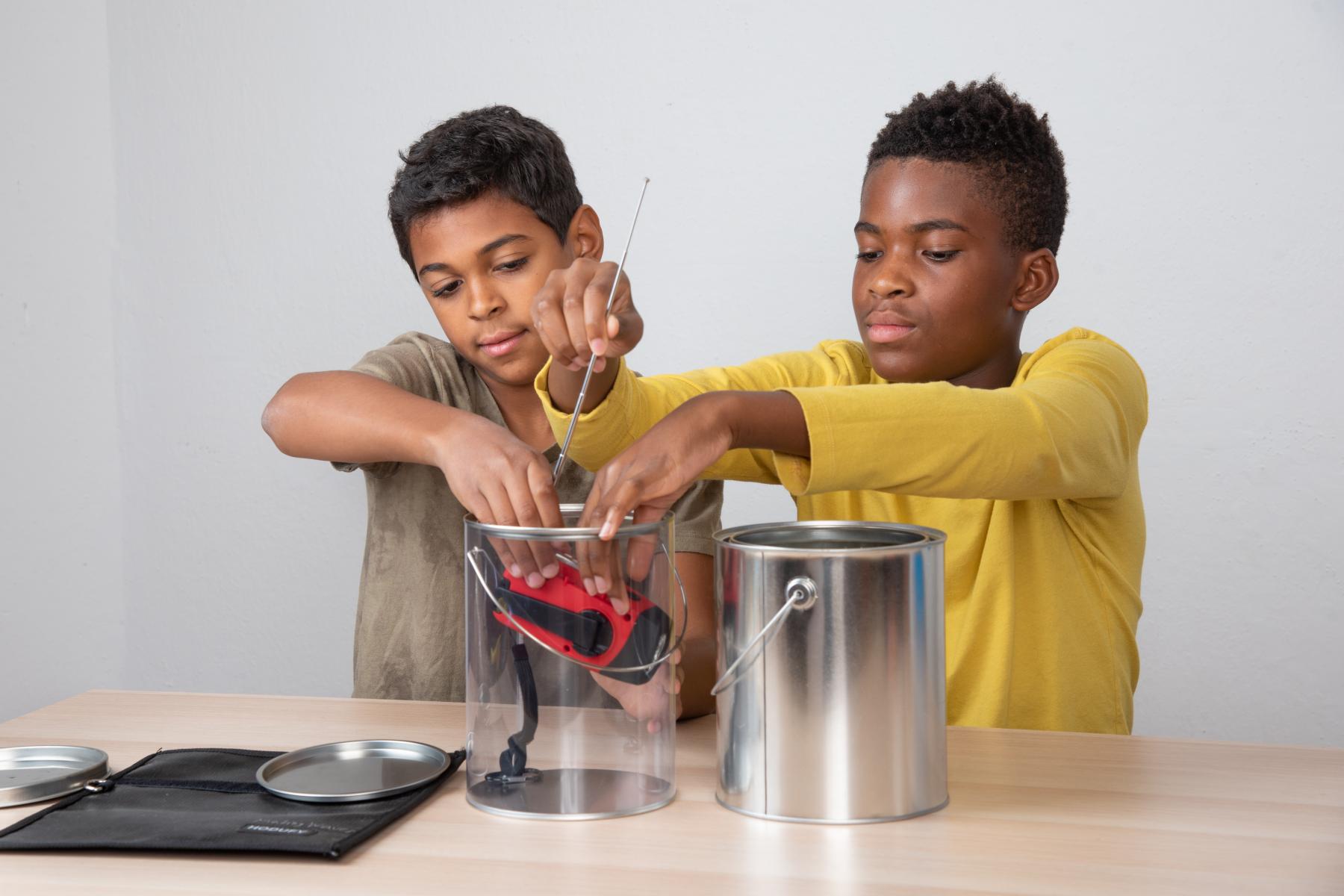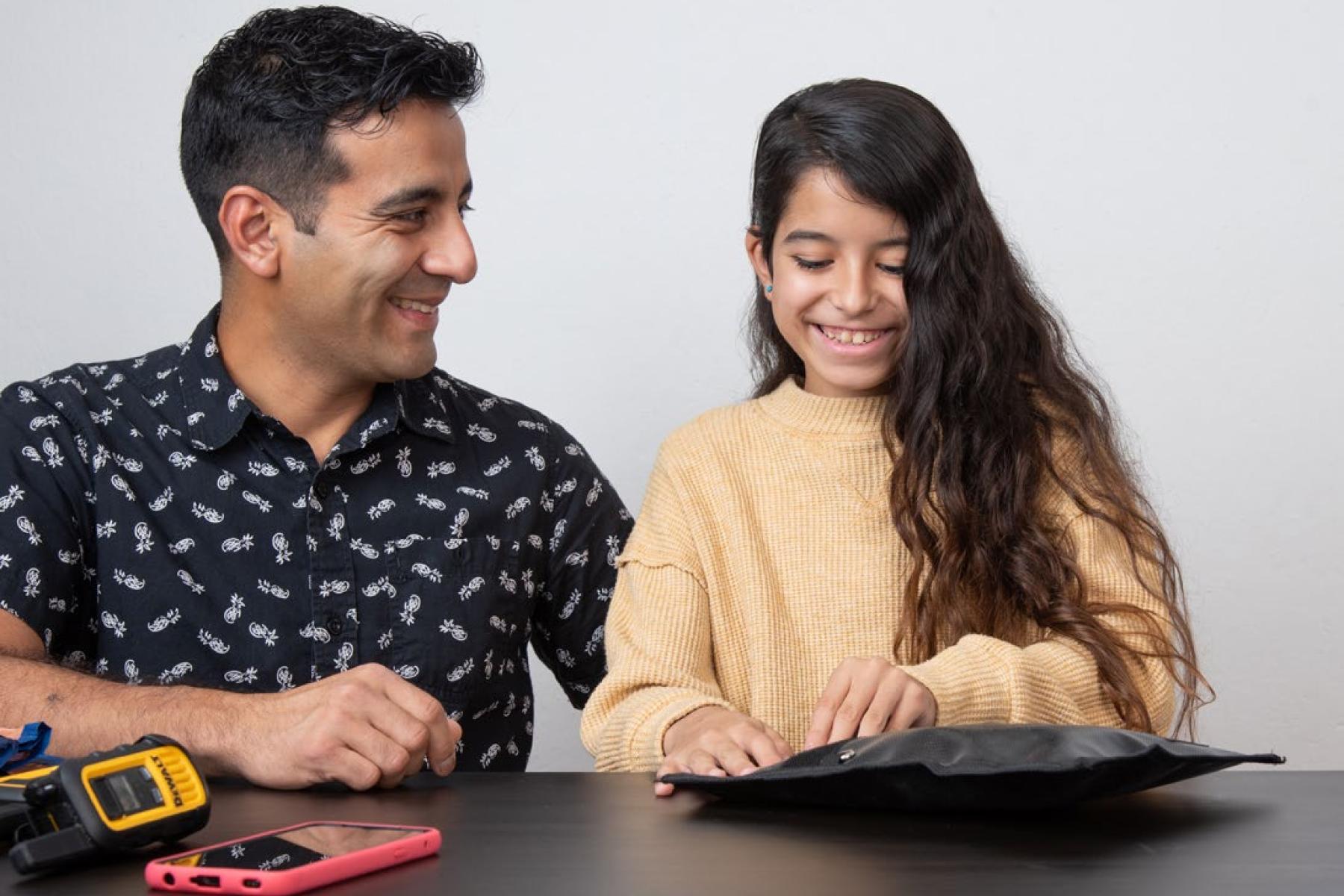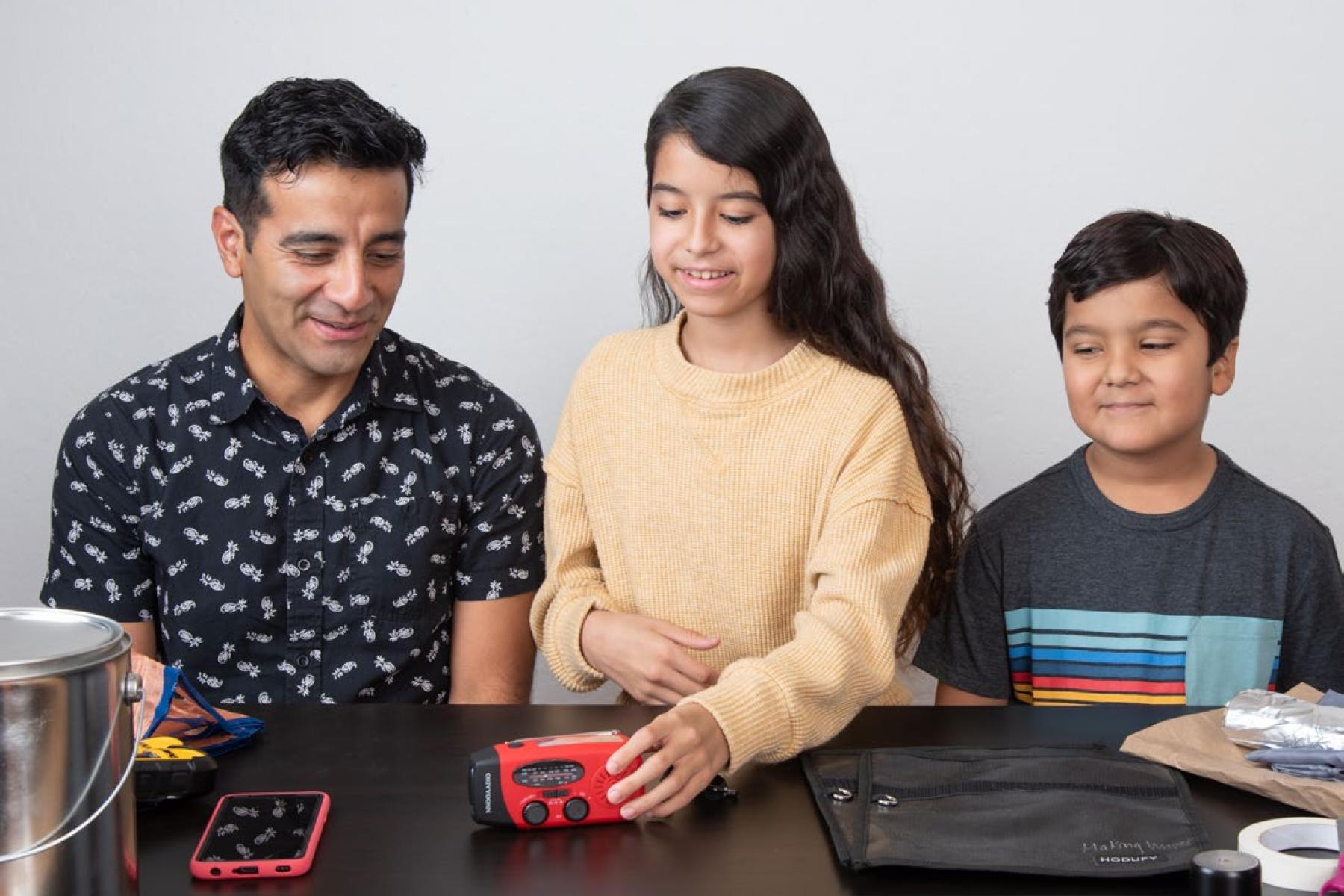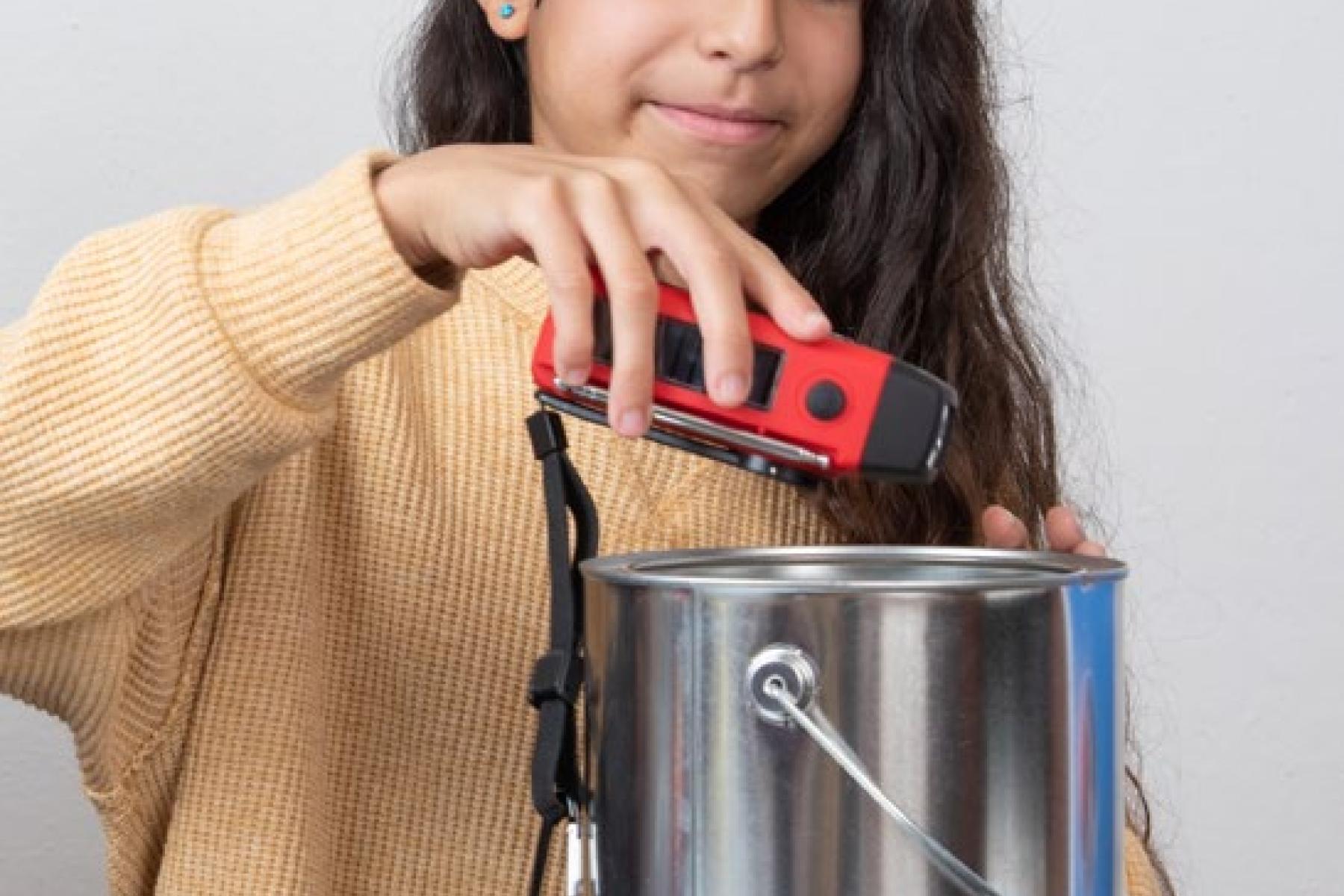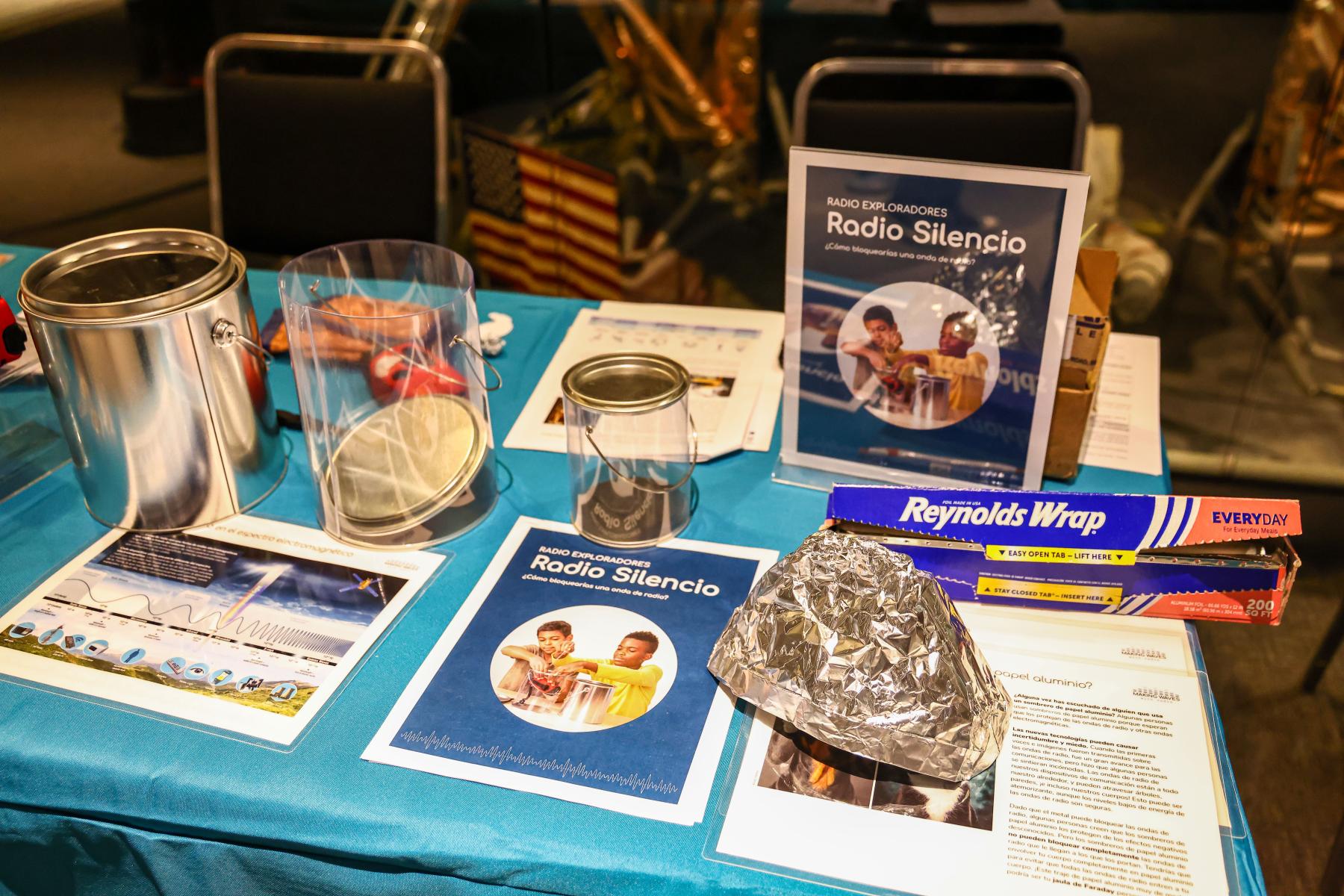DESCRIPTION
In this activity, participants will investigate radio waves—one type of energy from the electromagnetic spectrum. While radio waves are invisible, we can interact with them through interference. Participants will experiment with both non-conductive and conductive materials to determine which is best at blocking radio waves, while discovering differences in the radio waves used by a range of devices including: portable radios, walkie-talkies, and/or Bluetooth speakers. Because different devices use different radio frequencies, some radio waves will travel better through certain materials.
DESCRIPTION
In this activity, participants will investigate radio waves—one type of energy from the electromagnetic spectrum. While radio waves are invisible, we can interact with them through interference. Participants will experiment with both non-conductive and conductive materials to determine which is best at blocking radio waves, while discovering differences in the radio waves used by a range of devices including: portable radios, walkie-talkies, and/or Bluetooth speakers. Because different devices use different radio frequencies, some radio waves will travel better through certain materials.
TRAINING VIDEOS
OBJECTIVES
LEARNING GOALS
Radio waves transfer energy that can be reflected or absorbed, or pass
through materials.Radio waves are invisible and all around us.
Different devices use different radio frequencies.
Credits
Developed with funding from the National Science Foundation under Award Number 2053160. Any opinions, findings, and conclusions or recommendations expressed in this product are those of the authors and do not necessarily reflect the views of the Foundation.
Creative Commons Attribution Non-Commercial Share Alike 3.0 United States (CC BY-NC-SA 3.0 US).
View more details

NISE Network products are developed through an iterative collaborative process that includes scientific review, peer review, and visitor evaluation in accordance with an inclusive audiences approach. Products are designed to be easily edited and adapted for different audiences under a Creative Commons Attribution Non-Commercial Share Alike license. To learn more, visit our Development Process page.

